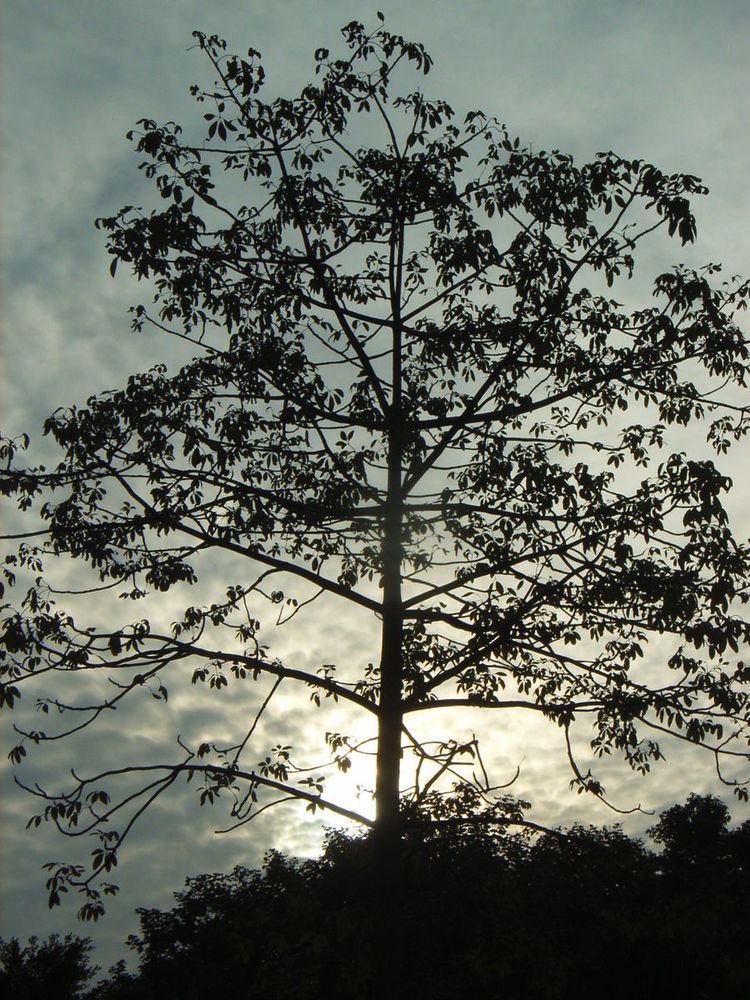 | ||
The crown of a plant refers to the totality of an individual plant's aboveground parts, including stems, leaves, and reproductive structures. A plant community canopy consists of one or more plant crowns growing in a given area.
The crown of a woody plant (tree, shrub, liana) is the branches, leaves, and reproductive structures extending from the trunk or main stems.
Shapes of crowns are highly variable. The major types for trees are the excurrent branching habit resulting in conoid shapes and decurrent (deliquescent) branching habit, resulting in round shapes. Crowns are also characterized by their width, depth, surface area, volume, and density. Measurements of crowns are important in quantifying and qualifying plant health, growth stage, and efficiency.
Major functions of the crown include light energy assimilation, carbon dioxide absorption and release of oxygen via photosynthesis, energy release by respiration, and movement of water to the atmosphere by transpiration. These functions are performed by the leaves. Branches of the crown provide mechanical support to distribute the leaves efficiently and serve as conduits for resources (water, nutrients, photosynthates) to perform these functions.
Crown classes
Trees can be described as fitting different crown classes. Commonly used are Kraft's classes. Kraft designated these social classes based on temperate and boreal forests in Mitteleuropa, so they do not necessarily work with every forest type in the world.
Kraft wrote in German so here are his classes with translations:
Often it has been simplified to Dominant, Co-dominant and Suppressed.
Also IUFRO developed a tree classification it is based on three components with numbers that then aggregate to give a coded classification thus:
Ecological Criteria
Height component (Stand layer / Height class):
Vitality component (Tree vigor / vitality):
Future growth potential component (Developmental tendency / conversion tendency):
and then additionally
Silvicultural Criteria
Commercial worth
Trunk class
Crown class
While both Kraft and IUFRO classifications are aimed at describing individual tree crowns both can an are applied to describe whole layers or storeys.
